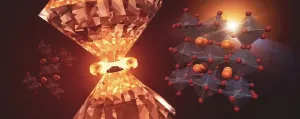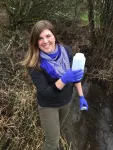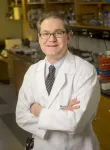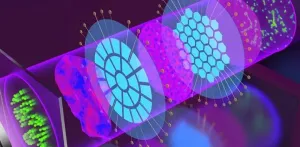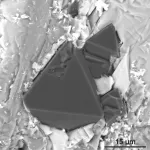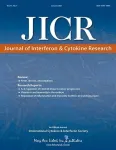(Press-News.org) Among the materials known as perovskites, one of the most exciting is a material that can convert sunlight to electricity as efficiently as today's commercial silicon solar cells and has the potential for being much cheaper and easier to manufacture.
There's just one problem: Of the four possible atomic configurations, or phases, this material can take, three are efficient but unstable at room temperature and in ordinary environments, and they quickly revert to the fourth phase, which is completely useless for solar applications.
Now scientists at Stanford University and the Department of Energy's SLAC National Accelerator Laboratory have found a novel solution: Simply place the useless version of the material in a diamond anvil cell and squeeze it at high temperature. This treatment nudges its atomic structure into an efficient configuration and keeps it that way, even at room temperature and in relatively moist air.
The researchers described their results in Nature Communications.
"This is the first study to use pressure to control this stability, and it really opens up a lot of possibilities," said Yu Lin, a SLAC staff scientist and investigator with the Stanford Institute for Materials and Energy Sciences (SIMES).
"Now that we've found this optimal way to prepare the material," she said, "there's potential for scaling it up for industrial production, and for using this same approach to manipulate other perovskite phases."
A search for stability
Perovskites get their name from a natural mineral with the same atomic structure. In this case the scientists studied a lead halide perovskite that's a combination of iodine, lead and cesium.
One phase of this material, known as the yellow phase, does not have a true perovskite structure and can't be used in solar cells. However, scientists discovered a while back that if you process it in certain ways, it changes to a black perovskite phase that's extremely efficient at converting sunlight to electricity. "This has made it highly sought after and the focus of a lot of research," said Stanford Professor and study co-author Wendy Mao.
Unfortunately, these black phases are also structurally unstable and tend to quickly slump back into the useless configuration. Plus, they only operate with high efficiency at high temperatures, Mao said, and researchers will have to overcome both of those problems before they can be used in practical devices.
There had been previous attempts to stabilize the black phases with chemistry, strain or temperature, but only in a moisture-free environment that doesn't reflect the real-world conditions that solar cells operate in. This study combined both pressure and temperature in a more realistic working environment.
Pressure and heat do the trick
Working with colleagues in the Stanford research groups of Mao and Professor Hemamala Karunadasa, Lin and postdoctoral researcher Feng Ke designed a setup where yellow phase crystals were squeezed between the tips of diamonds in what's known as a diamond anvil cell. With the pressure still on, the crystals were heated to 450 degrees Celsius and then cooled down.
Under the right combination of pressure and temperature, the crystals turned from yellow to black and stayed in the black phase after the pressure was released, the scientists said. They were resistant to deterioration from moist air and remained stable and efficient at room temperature for 10 to 30 days or more.
Examination with X-rays and other techniques confirmed the shift in the material's crystal structure, and calculations by SIMES theorists Chunjing Jia and Thomas Devereaux provided insight into how the pressure changed the structure and preserved the black phase.
The pressure needed to turn the crystals black and keep them that way was roughly 1,000 to 6,000 times atmospheric pressure, Lin said - about a tenth of the pressures routinely used in the synthetic diamond industry. So one of the goals for further research will be to transfer what the researchers have learned from their diamond anvil cell experiments to industry and scale up the process to bring it within the realm of manufacturing.
INFORMATION:
Wendy Mao and Hemamala Karunadasa are also SIMES investigators. Parts of this work were performed at the Advanced Photon Source at Argonne National Laboratory and the Advanced Light Source at Lawrence Berkeley National Laboratory. It also used resources of the National Energy Research Scientific Computing Center (NERSC). All three are DOE Office of Science user facilities. Major funding came from the DOE Office of Science.
Citation: Feng Ke et al., Nature Communications, 19 January 2020 (10.1038/s41467-020-20745-5)
SLAC is a vibrant multiprogram laboratory that explores how the universe works at the biggest, smallest and fastest scales and invents powerful tools used by scientists around the globe. With research spanning particle physics, astrophysics and cosmology, materials, chemistry, bio- and energy sciences and scientific computing, we help solve real-world problems and advance the interests of the nation.
SLAC is operated by Stanford University for the U.S. Department of Energy's Office of Science. The Office of Science is the single largest supporter of basic research in the physical sciences in the United States and is working to address some of the most pressing challenges of our time.
Delivering a minor electric shock into a stream to reveal any fish lurking nearby may be the gold standard for detecting fish populations, but it's not much fun for the trout.
Scientists at Oregon State University have found that sampling stream water for evidence of the presence of various species using environmental DNA, known as eDNA, can be more accurate than electrofishing, without disrupting the fish.
"It's revolutionizing the way we do fish ecology work," said Brooke Penaluna, a research fish biologist with the U.S. Department of Agriculture Forest Service who also has an appointment in OSU's Department ...
If you believe you are capable of becoming the healthy, engaged person you want to be in old age, you are much more likely to experience that outcome, a recent Oregon State University study shows.
"How we think about who we're going to be in old age is very predictive of exactly how we will be," said Shelbie Turner, a doctoral student in OSU's College of Public Health and Human Sciences and co-author on the study.
Previous studies on aging have found that how people thought about themselves at age 50 predicted a wide range of future health outcomes up to 40 years later -- cardiovascular events, memory, balance, will to live, hospitalizations; even mortality.
"Previous ...
BIRMINGHAM, Ala. - A 72-year-old woman was hospitalized with severe COVID-19 disease, 33 days after the onset of symptoms. She was suffering a prolonged deteriorating illness, with severe pneumonia and a high risk of death, and she was unable to mount her own immune defense against the SARS-CoV-2 virus because of chronic lymphocytic leukemia, which compromises normal immunoglobulin production.
But when physicians at the University of Alabama at Birmingham recommended a single intravenous infusion of convalescent blood plasma from her son-in-law -- who had recovered from COVID-19 disease ...
Microscopy is the workhorse of contemporary life science research, enabling morphological and chemical inspection of living tissue with ever-increasing spatial and temporal resolution. Even though modern microscopes are genuine marvels of engineering, minute deviations from ideal imaging conditions will still lead to optical aberrations that rapidly degrade imaging quality. A mismatch between the refractive indices of the sample and its immersion medium, deviations in the thickness of sample holders or cover glasses, the effects of aging on the instrument--such deviations ...
Contemporary robots can move quickly. "The motors are fast, and they're powerful," says Sabrina Neuman.
Yet in complex situations, like interactions with people, robots often don't move quickly. "The hang up is what's going on in the robot's head," she adds.
Perceiving stimuli and calculating a response takes a "boatload of computation," which limits reaction time, says Neuman, who recently graduated with a PhD from the MIT Computer Science and Artificial Intelligence Laboratory (CSAIL). Neuman has found a way to fight this mismatch between a robot's "mind" and body. The method, called robomorphic computing, uses a robot's physical layout and intended applications ...
BOSTON - Regular aspirin use has clear benefits in reducing colorectal cancer incidence among middle-aged adults, but also comes with some risk, such as gastrointestinal bleeding. And when should adults start taking regular aspirin and for how long?
There is substantial evidence that a daily aspirin can reduce risk of colorectal cancer in adults up to age 70. But until now there was little evidence about whether older adults should start taking aspirin.
A team of scientists set out to study this question. They were led by Andrew T. Chan MD, MPH, a gastroenterologist and chief of the Clinical and Translational Epidemiology Unit at ...
Diamond, like graphite, is a special form of carbon. Its cubic crystal structure and its strong chemical bonds give it its unique hardness. For thousands of years, it has also been sought after as both a tool and as a thing of beauty. Only in the 1950s did it become possible to produce diamonds artificially for the first time.
Most natural diamonds form in the Earth's mantle at depths of at least 150 kilometres, where temperatures in excess of 1500 degrees Celsius and enormously high pressures of several gigapascals prevail - more than 10.000 times that of a well-inflated bicycle tyre. There are different theories for the exact mechanisms ...
The liquid electrolytes in flow batteries provide a bridge to help carry electrons into electrodes, and that changes how chemical engineers think about efficiency.
The way to boost electron transfer in grid-scale batteries is different than researchers had believed, a new study from the University of Michigan has shown.
The findings are a step toward being able to store renewable energy more efficiently.
As governments and utilities around the world roll out intermittent renewable energy sources such as wind and solar, we remain reliant on coal, natural gas and nuclear power plants to provide energy when the wind isn't blowing and the sun isn't shining. Grid-scale "flow" batteries are one proposed solution, storing energy for later use. But because they aren't very efficient, ...
New Rochelle, NY, January 20, 2020--SARS-CoV-2, the virus that causes COVID-19, blocks the processes of innate immune activation that normally direct the production and/or signaling of type I interferon (IFN-I) by the infected cell and tissues. IFN-I is a key component of host innate immunity that is responsible for eliminating the virus at the early stage of infection, as summarized in a recent review article in Journal of Interferon & Cytokine Research (JICR). By suppressing innate immunity, the virus replicates and spreads in the body unchecked, leading to the disease known as COVID-19. Click here to read the article now.
"SARS-CoV-2 utilizes various approaches to evade host IFN-I response, including suppression of IFN-I ...
Even a modest sea level rise, triggered by increasing global temperatures, would place 100 airports below mean sea level by 2100, a new study has found.
Scientists from Newcastle University modelled the risk of disruption to flight routes as a result of increasing flood risk from sea level rise.
Publishing the findings in the journal Climate Risk Management, Professor Richard Dawson and Aaron Yesudian of Newcastle University's School of Engineering analysed the location of more than 14,000 airports around the world and their exposure to storm surges for current and future sea level. The researchers also studied airports' pre-COVID-19 connectivity and aircraft traffic, and their current level of flood protection.
They ...
